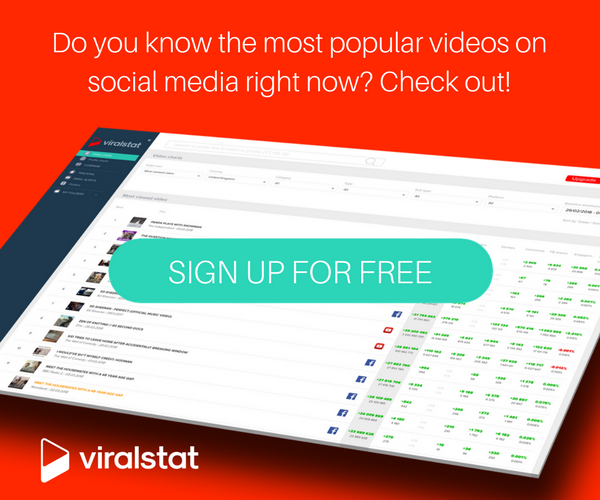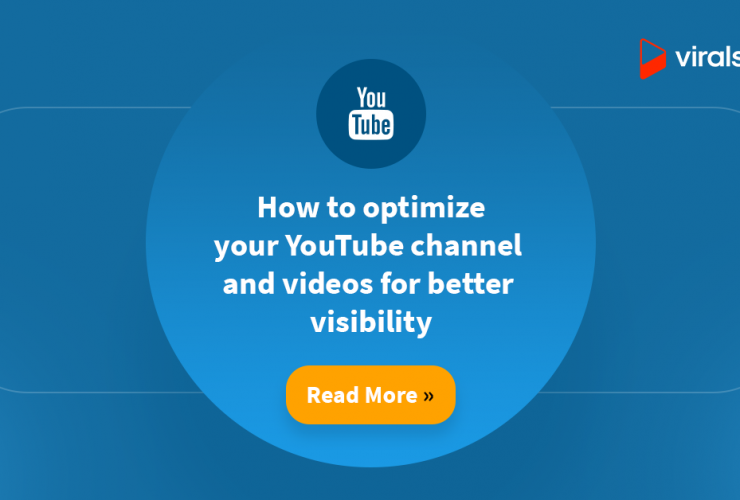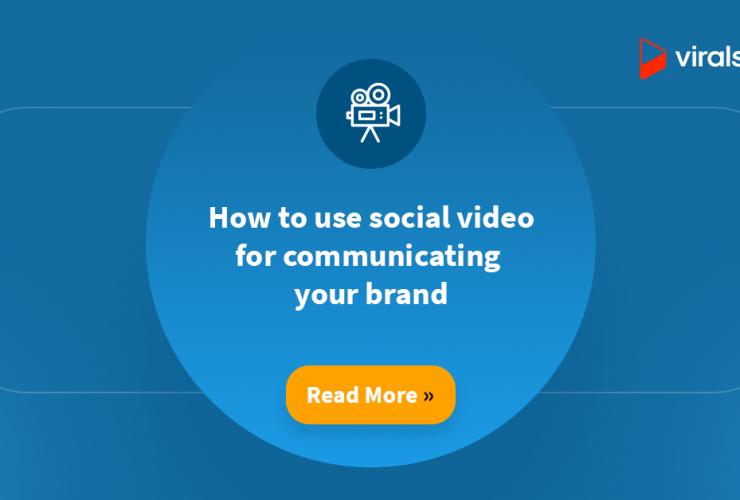Facebook and a YouTube video. Of all the platforms you could share videos on, YouTube and Facebook are the two most popular. These social networks also provide an example of just how different two platforms can be. Consequently, this raises the questions – where should you publish videos and which platform is more effective?
The power of a video
That’s obvious, a video will continue to be a key element of successful digital marketing strategies for the foreseeable  future. Huge budgets are shifting to video, on every channel. More and more companies use video as a marketing tool.
future. Huge budgets are shifting to video, on every channel. More and more companies use video as a marketing tool.
That’s not a surprise, the facts are as follows:
- A video is the best way to show a product or service on the web. In addition, videos can evoke emotions.
- We process a visual information 60,000-times faster than a text.
- More often than not, we choose the form of a message that requires from us the least effort – a video provides the maximum experience with minimum effort.
- A vast majority of the people would rather watch a video than read.
Differences between a Facebook and a YouTube video
Before you choose Facebook or YouTube, try to understand the differences between these two social networks.
Key factors to consider:
- Frequency and amount of time people spend on each platform
Facebook sessions are frequent but last for a short time. While YouTube is the opposite – sessions last for a long time, but the frequency of visiting the site is much lower.
- The way people view each platform
Using Facebook people just scroll down the wall until something gets their attention. In addition, they often tend to be on-the-go or using their phone between meetings and typically are just jumping around a lot on the site.
When people visit YouTube, they are going to the website with the intention to watch videos. They likelly have time to sit and watch.
- Video length
Facebook videos tend to perform better when they’re quite short (less than 60 sec.), whereas longer videos (5+ min) perform better on YouTube.
In theory, YouTube users have a longer attention span. While on Facebook it’s typical that viewers spend only a few seconds on film, so you must engage them in during the first three seconds. Otherwise you will likely lose them.
- Topic selection
Facebook isn’t an appropriate environment for detailed content. Here it is more sensible to share the necessary concepts, answers to frequently asked questions and other simple ideas that can be quickly communicated.
Facebook is also a better place for your promotional videos, while YouTube isn’t the best network for direct sales.
On the other hand, YouTube is used for practical, step-by-step information. It’s a good channel to create tutorials, tips, and other in-depth content that offers a lot of value. This type of content is searched by users on YouTube, so if you want to share it, your videos will be ranked in YouTube search results.
- Call to action
The way you ask viewers to take action on Facebook and on YouTube is very different. Facebook doesn’t have subscribers, so you usually encourage viewers to like, comment or share the content.
If you’re going to share the same video on Facebook and on YouTube, make sure your CTA slides at the end of your video. This will ensure consistency between the two platforms.
- 🔭 Exposure and discoverability
Your YouTube videos are primarily found through searches on YouTube and Google or as suggestions from YouTube based on the video you’ve currently been watching. Because your videos can have a very long shelf-life, it can drive leads for potentially years into the future.
Conversely, your Facebook videos are initially limited. At the beginning only a small percentage of your fans have access to these resources (<10%). However, if that video gets strong engagement, then there is a chance it will reach a wider audience.
- 📈 Analytics and engagement
Each platform has different methods for counting views.
Facebook videos are automatically played in the newsfeed and count views every time someone plays the video for more than 3 seconds. A ton of the views you’re getting aren’t actual views, because the video could be played accidentally on the screen while the user was paying attention to another content.
With YouTube, your views are all authentic and more valuable. The number of video views is a key measure of success on YouTube. When someone watches your video on YouTube, it means they really chose to watch it.
Remember to evaluate your Facebook videos and YouTube videos separately because you won’t get quality insights by comparing the number of viewers on two completely different platforms.
🔇 Other issues worth remembering
On Facebook, 80-90% of the video content is played without sound. That’s why subtitles should be added to your films. Every day, 100 million hours of movies are displayed on Facebook. Mark Zuckerberg sees a video as a “mega trend”.
YouTube is the second largest search engine in the world! A billion hours of videos are watched daily by YouTube users. Help viewers find your videos on YouTube by adding the title, custom thumbnail and the appropriate tags (precise, descriptive, describing the format, and also include incorrect spelling). Remember to add a description, links to other videos in cards and create theme playlists.
📝 Summary and conclusions
If you want to choose an appropriate communication channel, take into account any differences described in the article. Make sure that your content is engaging and attracts the attention of viewers during first few seconds, because otherwise you will likely lose them. So, to conclude, we highly recommend using both channels in order to expand your reach.
📣 Read more:
➡ YouTube: What types of awards for creators?
➡ When could my account be verified on YouTube?
➡ What is Facebook PTAT (People Talking About This)?
➡ How to increase watch time on your YouTube channel?






Permalink